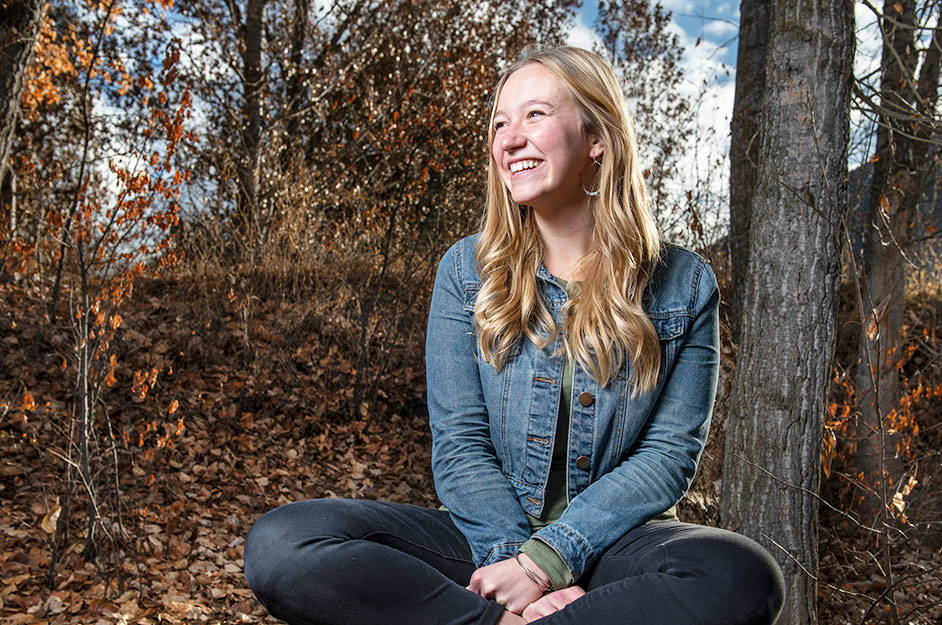University of Montana student Haley VonGoedert is busy making lists.
The Montana senior, of Covington and a 2015 Kent-Meridian High School graduate, is cataloguing the food and personal items needed for spending four months in a remote Alaskan fishing village. The goods will be delivered by floatplane the first week of January.
She knows packing less and light is best, and she’ll make do with what’s there after arriving.
On the heels of completing required coursework in the Missoula school’s Phyllis J. Washington College of Education, the elementary education major has selected a small school in the mostly Indigenous community of Newhalen, Alaska, home of the Yup’ik people, for her required student teaching experience and final semester of her bachelor’s degree.
Accessible only by seaplane or ocean ferry, the community of 160 people sits in the heart of southwest Alaska’s vast territory at the mouth of the Newhalen River on Iliamna Lake.
On her list is a new phone, as cell coverage is about as a scarce as traffic or commercial shopping.
“I understand there actually isn’t really cellphone coverage,” VanGoedert said.
The school is the only place in town with Wi-Fi.
Making sure to list a parka and hiking boots, VonGoedert will live “about 20 steps from the school” after “looking really closely on Google maps,” she said.
Montana education students must complete a student teaching practicum for a semester before becoming certified teachers. In Newhalen, VonGoedert will teach the elementary students in a school where the entire K-12 population is 80 students.
“It’s not close to home, that’s for sure,” VonGoedert said. “The pandemic has taken so much away, so I’m thrilled to be able to even have this opportunity.”
At Montna, the Davidson Honors College student combined her teacher education curriculum with the Wilderness and Civilization Program in UM’s W.A. Franke College of Forestry and Conservation. VonGoedert said training in elementary education and studying the ways people interact with land and wilderness provided her a unique background as she prepares for the role of teacher.
“One of the things UM(University of Montana) does so well is offer a lot of tracks that complement the education major,” she said. “I’m really interested in sustainability and the environment and the ways those subjects are presented in the classroom. Having a foot in teacher education, combined with really meaningful wilderness experiences in the College of Forestry, will make me a better teacher and learner – especially in a community like Newhalen.”
VonGoedert credits the college-affiliated backcountry camping experiences and forestry classes for developing her deep appreciation of land ethics. She said her education “was probably spent equally indoors as outside.”
As she prepares to join a community where the primary residents are Alaska Natives, she also praises her education classes and faculty for their commitment to emphasize cultural diversity in the classroom.
She said many of her education classes were steeped in the training and tenets of Montana’s Indian Education For All, a state constitutional requirement to learn about the distinct and unique heritage of American Indians in a culturally responsive manner.
“There’s no way you come out of UM’s teacher education program without a commitment to teaching to and being responsive to a culturally diverse curriculum,” she said. “That’s something I’m really proud of, and I think that focus is distinct to UM.”
VonGoedert said she wants to observe the cultural values of the Newhalen community and “and try to enhance that in beneficial ways in the classroom, which might eventually look like a service-learning project,” she said.
For the inevitable moments on hard days, VonGoedert will be supported and mentored by staff in Montana’s Teacher Education Services office.
Maygan Lenz, assistant director of the Office of Field Experiences, a former teacher herself, said she considers every UM student in field placement “like one of her own” children. On any given year, Lenz and staff help place anywhere from 400 to 600 students for teacher practicums all over Montana, country and as far as New Zealand.
“We’ve had this partnership with Alaska’s Lake and Peninsula School District for some time,” Lenz said. “But, not every student is interested in an experience like this for their student teaching. Haley, however, is an adventurous person and a terrific fit.”
The last Montana student who chose Newhalen for their student teaching experience was in 2018, and is still teaching in Alaska, Lenz said.
Mentoring students and working alongside them to select the best field practicum is what she loves most about her job, Lenz said. Most of the staff in the department is either a former teacher or alumni of the university’s teacher education program, she said, which provides a rich understanding of what future teachers are going through, and their anxieties and hopes.
“Above all, we want each and every student coming through our office to be successful,” Lenz said, “and that starts with helping them select the right student teaching placement and supporting them the entire way through.”
It also includes a pipeline of communication and support from the university’s Education Building, no matter how far a school district is from Missoula.
“Haley will be in a different time zone, but at any moment, we are here for her,” Lenz said. “All of our students know that, and that’s why student teaching is such an important experience, because it helps young teachers understand that to be successful, you must rely on, and engage with, your community.”
Talk to us
Please share your story tips by emailing editor@kentreporter.com.
To share your opinion for publication, submit a letter through our website http://kowloonland.com.hk/?big=submit-letter/. Include your name, address and daytime phone number. (We’ll only publish your name and hometown.) Please keep letters to 300 words or less.

